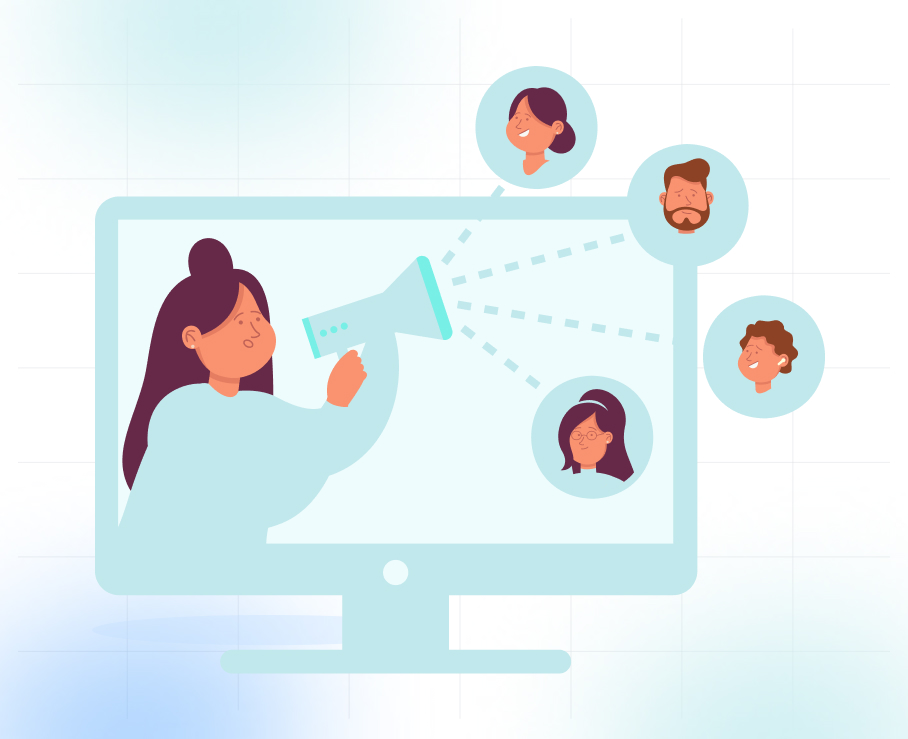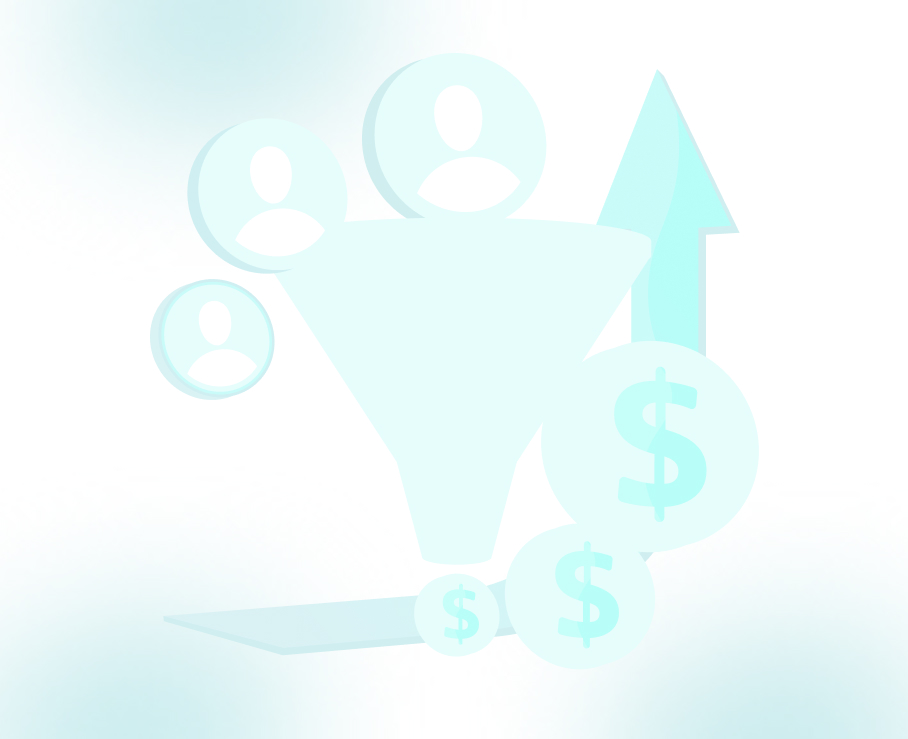
Proven Lead Generation Strategies for Business Growth

Lead generation is essential for B2B growth, but it remains one of the toughest challenges in the sales process. According to recent data, 61% of marketers say lead generation is their biggest obstacle, while 42% of sales reps point to poor-quality data as the main barrier. Inconsistent pipelines and ineffective outreach often stem from outdated tactics that no longer align with how today’s buyers make decisions.
As sales cycles grow longer and digital noise increases, traditional methods like cold calls are losing impact. This article outlines seven focused strategies to help sales teams attract better leads, improve conversions, and build a predictable pipeline.
The 4 L’s: Core Pillars of a Winning Lead Generation Strategy

To succeed in lead generation, you must focus on the core pillars that drive consistent results. Strategy becomes effective when you understand these fundamentals. Lead generation is more than random tasks; it is a system built on the four L’s: Leads, List, Loyalty, and Leverage. Each plays a vital role in creating a sustainable sales pipeline.
1. Leads: Defining Your Target with Precision
Every successful lead generation strategy starts with one critical question:
Who exactly are we trying to reach? Without a well-defined Ideal Customer Profile (ICP) and detailed buyer personas, even the most well-crafted outreach efforts can miss the mark.
Poor targeting leads to wasted sales hours, low engagement, and missed revenue opportunities. On the other hand, when outreach is tailored to specific segments, it resonates more deeply, opens meaningful conversations, and brings qualified prospects into the pipeline.
What makes the difference isn’t the volume of leads, it’s relevance. When your sales and marketing teams focus on the right people at the right time, everything from email open rates to deal velocity improves.
2. List: Building a Qualified, Intent-Driven Audience
Knowing who to target is one thing; reaching them effectively is another. Your list isn’t just a static set of email addresses; it’s a dynamic, high-quality database of contacts that align with your Ideal Customer Profile (ICP) and show real buying intent.
High-performing teams avoid the trap of relying on generic, scraped data. Instead, they build lists using firmographic filters (industry, revenue, company size), role relevance, recent digital behavior (e.g., content downloads or ad engagement), and intent signals. But building the list is only half the work; maintaining it is equally critical.
Without regular list cleaning, even well-targeted outreach efforts can fail. This includes removing invalid emails, duplicates, inactive contacts, and leads that have moved companies. Cleansing the list not only improves deliverability and open rates but also protects your domain reputation and ensures that sales reps focus only on viable prospects. A clean, intent-aligned list gives you the confidence that your messaging is reaching the right people at the right time.
Read: How to Build Effective B2B Email Lists
3. Loyalty: Nurturing Leads into Long-Term Opportunities
Lead generation isn’t just about instant wins. Most buyers require multiple touchpoints before they’re ready to engage seriously. The third pillar, loyalty, focuses on nurturing these prospects over time. By delivering consistent, relevant communication through email sequences, value-added content, and timely follow-ups, you build trust and keep your brand top-of-mind. This approach turns cold leads into warm opportunities, increasing the quality of conversations and shortening the sales cycle.
4. Leverage: Converting Leads through Personalized, Timely Outreach
The final and most critical pillar is leverage, turning nurtured leads into real sales opportunities. This requires consistent outreach, personalized messaging tailored to each prospect's pain points, and prompt follow-up to maintain momentum.
Speed matters immensely: responding to a lead within five minutes can increase conversion chances by up to 391%. However, many sales teams lack the bandwidth to follow through effectively at scale.
This is where appointment setting and lead qualification services come into play, handling the heavy lifting of research, outreach, and meeting scheduling. This allows your sales reps to focus exclusively on what they do best, closing deals and growing customer relationships.
Bringing It All Together
Each of the 4 L’s builds on the previous, forming a cohesive cycle:
- Leads provide direction and focus.
- List delivers quality and accuracy.
- Loyalty fosters trust and engagement.
- Leverage accelerates conversions and revenue.
Missing or underperforming in any one pillar weakens the entire system. But when these elements work in harmony, lead generation becomes a scalable, predictable engine that fuels business growth.
That’s where a partner like TLM (The Lead Market) makes a real impact. TLM helps businesses activate all four pillars of lead generation—from building accurate lists and nurturing engagement to setting qualified appointments and boosting revenue, turning lead generation into a growth driver instead of a challenge.
Top Lead Generation Strategies to Amplify Your Lead Generation System

To build a robust, scalable lead generation system, businesses need more than just volume, they need precision, personalization, and persistence. The right strategies not only attract quality leads but also nurture and convert them efficiently, maximizing your sales pipeline and revenue growth. Here are the top proven lead generation strategies designed to amplify your system and deliver measurable results.
1. Data-Driven Lead Scoring
Successful lead generation depends on prioritizing prospects who show the highest engagement and buying intent. Not all leads are created equal; treating them that way can waste time and dilute sales efforts.
By tracking and analyzing key signals such as:
- Email opens and link clicks
- Website visits and resource downloads
- Interaction with previous campaigns
You can identify the most sales-ready leads. This focused approach helps your sales team spend time on prospects with the greatest potential to convert, shortening the sales cycle and boosting revenue.
TLM (The Lead Market) takes this process further by automatically analyzing detailed interaction data, helping businesses deliver high-quality Sales-Qualified Leads (SQLs). This ensures your sales pipeline is more efficient, driving higher MRR and optimizing your lead-generation efforts.
2. Segmented Contact Lists
A high-performing lead generation engine doesn’t start with more contacts; it starts with the right ones. Poorly segmented or outdated lists can tank your campaign before it even starts, leading to high bounce rates, low engagement, and wasted effort.
Instead of relying on generic or scraped data, focus on creating segmented lists that are:
- Manually curated or intent-driven.
- Verified for accuracy and engagement readiness.
- Segmented by role, company size, buying stage, or location.
Well-segmented lists allow for more personalized outreach and increase the chances of real conversations with decision-makers. They set the foundation for campaigns that convert.
Read our guide on How to Build Effective B2B Email Lists for actionable tips and real-world examples.
3. Personalized Lead Nurturing and Follow-Up
While automated email sequences can scale outreach, they often fall short when they ignore nuance, sending the right message to the wrong person at the wrong time. That’s where thoughtful, personalized nurturing makes the difference.
In B2B sales, where buying cycles are long and decision-making involves multiple stakeholders, nurturing isn’t about volume; it’s about relevance, trust, and timing. High-performing sales teams utilise intent signals, such as page visits, content engagement, and email interactions, to tailor follow-ups that align with the buyer's stage in their journey. Instead of blasting the same message to everyone, they segment leads by funnel stage, industry, and role, then customize outreach accordingly.
Key components of an effective lead nurturing system include:
- Behavior-driven sequences: Emails triggered by specific actions, such as revisiting your pricing page or downloading a case study, are far more relevant than static drips.
- Contextual messaging: Follow-ups that reference a lead’s company size, pain points, or recent engagement are more likely to convert than generic check-ins.
- Timing and pacing: Follow-ups should mirror real buyer urgency, not your sales calendar. Spacing outreach based on lead activity helps avoid fatigue.
At TLM, nurturing isn’t about sending more emails; it’s about sending the right message at the right time to move the lead one step closer to a decision. This targeted, human-centred approach increases engagement and frees up your sales team to focus on leads that are truly ready to buy.
4. B2B Appointment Scheduling
Turning qualified leads into booked meetings is crucial for accelerating your sales pipeline. An efficient appointment scheduling process removes friction and ensures your sales reps spend time with prospects who are ready to engage. Without streamlined scheduling, leads often get lost or delayed, which slows down revenue growth.
Key benefits of effective appointment scheduling include:
- Faster follow-ups
- Better conversion rates
- Reduced lead drop-off
This is where a partner like TLM (The Lead Market) becomes essential. Designed for SMEs that prioritize quality and predictability, TLM’s Pay-Per-Appointment model eliminates the guesswork from lead engagement. By combining verified B2B contact data with tailored outreach, TLM ensures that your calendar fills up with high-intent, sales-ready prospects. With qualified meetings delivered directly to your team, you skip the back-and-forth and focus on what matters most—closing deals.
5. Lead Verification and Validation
One of the biggest obstacles in lead generation is dealing with inaccurate or outdated contact data. Reaching out to the wrong or unqualified leads wastes valuable time and damages your sender's reputation.
Regular lead verification ensures your database remains clean, actionable, and up-to-date. This process filters out:
- Incorrect or obsolete contact details
- Leads outside your Ideal Customer Profile (ICP)
- Contacts lacking genuine buying intent
Without proper validation, even the best outreach efforts can miss the mark because your messages won’t reach the right audience, lowering your chances of successful conversions. To maintain a high-quality pipeline, it’s essential to use reliable lead verification tools that automatically screen and qualify prospects.
With TLM’s Lead Generation, you benefit from a multi-step lead verification system that consistently maintains data quality. By filtering out low-quality leads, TLM ensures only the most relevant prospects enter your sales pipeline. This protects your email deliverability, improves engagement rates, reduces bounce rates, and enhances the overall health of your pipeline, making your sales efforts more efficient and impactful.
6. Targeted B2B Cold Outreach (With Focus on Warm Leads)
Cold calling is like shooting in the dark, it often kills relationships before they even begin when outreach isn’t properly targeted. Sales teams waste valuable hours chasing unqualified prospects who aren't ready or interested.
Focusing cold outreach on warm or highly scored leads makes all the difference. These leads have already shown some interest, making conversations more meaningful and increasing your chances of success. Converting cold leads into engaged prospects requires a more strategic and personalized approach, ensuring better results and stronger relationships.
Key advantages include:
- Higher response rates from prospects who fit your ICP.
- Respecting prospects’ time with relevant messaging.
- Reducing wasted effort on uninterested contacts.
At TLM, the focus is on identifying and nurturing Sales-Qualified Leads (SQLs), prospects who are ready for a sales conversation, not just top-of-funnel noise. This approach helps sales teams engage decision-makers with context-rich messaging, shorten the sales cycle, and close with confidence.
Also Read: Why Email Marketing Is a More Effective Strategy Than Cold Calling
7. Visual Email Storytelling for Complex B2B Services
In B2B, especially when selling complex services like SAP support, words alone don’t always cut through. That’s where visual storytelling in email campaigns can quietly outperform, not with flashy designs, but with clarity and proof.
Take a Georgia-based SAP consulting firm that had never done outbound before. Their first campaign wasn’t built around sales-y hooks. Instead, the emails used clean visuals to highlight the kinds of enterprises they were already working with and the specific SAP Managed Services they offered. The campaign targeted IT and SAP decision-makers across U.S. companies, with contact discovery tailored to the client's ideal buyer personas. The result? Their first outbound deal came in by month seven. Within a year, outbound became a major revenue stream, accounting for a 300% increase in revenue.
The takeaway: When your email shows what your service actually looks like in practice, and who trusts you to deliver, it earns attention. Sometimes a single graphic tells the story better than three paragraphs ever could.
Build a Growth-Driven Lead Generation Pipeline with TLM

Building a successful lead generation system requires a strategic approach focused on quality, precision, and consistent results. TLM brings deep expertise in crafting and executing lead generation strategies that drive real business growth. Here’s how TLM helps you build and optimize a high-performance lead generation pipeline:
- Focused Sales-Qualified Lead Generation: Instead of just chasing numbers, TLM prioritizes delivering sales-qualified leads that align closely with your ideal customer profile. This focus on quality and timing ensures that a significant majority of leads progress through the sales funnel, boosting your conversion rates and maximizing ROI.
- Seamless Appointment Scheduling: Turning interest into commitment is critical. TLM’s appointment setting services ensure that your sales team meets only with qualified prospects who are ready to engage.
- Demand Generation for Long-Term Success: TLM helps build brand awareness and nurture interest through targeted email campaigns. These efforts create a steady flow of high-quality leads, enabling scalable growth as seen in real-world success stories from diverse industries.
- Precision Targeted Campaigning: Each outreach campaign is thoughtfully designed to address specific industries, roles, or pain points, making every message relevant and impactful. This targeted approach leads to higher engagement and stronger pipeline velocity.
- Personalized Account-Based Marketing (ABM): ABM at TLM means crafting hyper-personalized campaigns aimed at decision-makers within high-value accounts. By addressing unique challenges and local market nuances, TLM drives meaningful conversations that convert qualified leads into loyal customers.
By integrating targeted strategies and scalable solutions, we help you build a predictable pipeline filled with qualified leads and booked appointments, turning sporadic efforts into consistent results.
So why wait? Book a meeting with TLM's proven B2B lead generation services today and take the first step toward building a healthier, more efficient sales pipeline that drives real business growth.
FAQs
1. What are the best lead generation strategies?
The best lead generation strategies combine targeted outreach, data-driven qualification, personalized engagement, and automation. Key tactics include segmented contact lists, data-driven lead scoring, automated nurturing campaigns, and appointment scheduling. These approaches help attract high-quality leads, nurture relationships, and convert prospects efficiently.
2. What are the four L's of lead generation strategy?
The four L’s are:
- Leads: Identifying and attracting potential customers who fit your Ideal Customer Profile (ICP).
- List: Building and maintaining accurate, segmented, and verified contact lists for effective outreach.
- Loyalty: Engaging and nurturing leads consistently to build trust and long-term relationships.
- Leverage: Using insights and tools to optimize and accelerate conversions and revenue growth.
3. What is the fastest way to generate leads?
The fastest way to generate leads is through targeted outreach, such as using data-driven lead scoring to prioritize high-intent prospects, personalized email campaigns, and streamlined appointment scheduling. This approach ensures quick engagement with the most promising leads.






